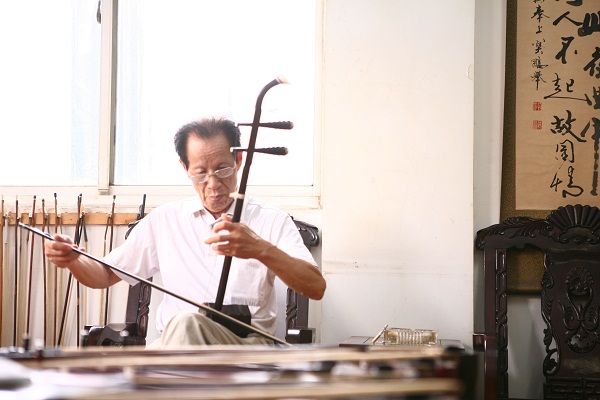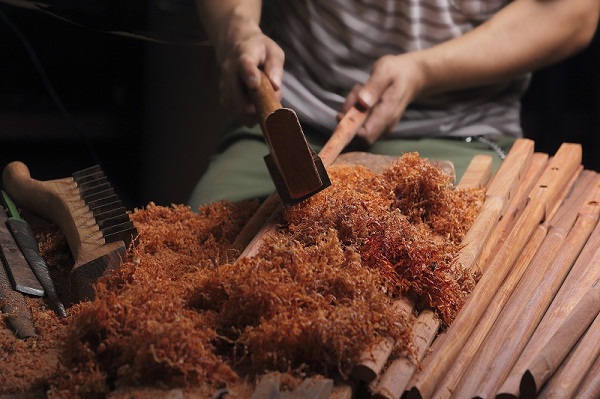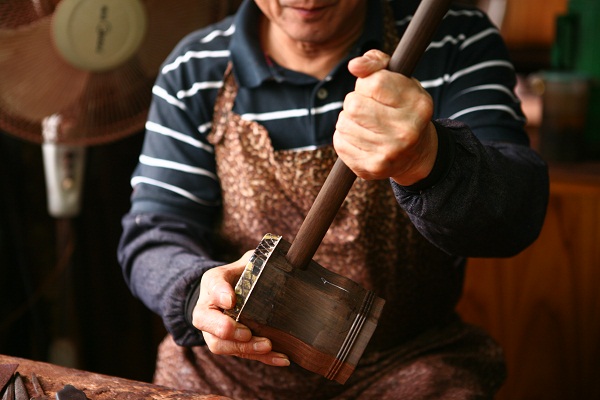Traditional musical instrument resonates cultural depth of Wuxi
China Daily Updated: Nov 06, 2020
Wan Qixing, a master artisan. [Photo by Xu Wei/for China Daily]
Key city to the south of the Yangtze River a prime example of balance between modern industry and heritage
Ask any Chinese fan about the traditional two-stringed bowed instalment erhu and Moon Reflected on Second Spring will most likely be mentioned.
The piece was famously composed and played six decades ago by Ah Bing, a blind street musician whose real name was Hua Yanjun.
His hometown in Wuxi, East China's Jiangsu province, is known as a major production center of the instrument.
Erhu, one of the most representative traditional music instruments in the southern Yangtze River area, has a profound connection with Wuxi's Meicun town.
Meicun began producing the instrument in 1965. Led by master artisans such as Lu Linsheng, Wan Qixing and Wan Jugen, more people have since devoted themselves to the instrument.
An erhu guild has been set up, riding on the established "Meicun brand" that has grown to include at least 18 major groups producing more than 50,000 erhu annually.
The town has nurtured many craftsmen of the traditional instrument and continues to be a guardian of its musical form.
Wan Qixing is known for crafting the instrument, sometimes known in the Western world as the Chinese violin, for more than six decades, with a workshop in Meicun.
Wan, born in Meicun in 1938, founded the Guyue Erhu Workshop in 1991. In 2009, he won a gold medal at the "superior erhif competition organized by the Erhu Society of Chinese Musicians Association and clinched the top accolade of "master erhu maker".
A year later, he was invited to the inaugural "international treasure" ernu-making competition, winning two gold and three silver medals as an "international master erhu maker". Wan's creations have been known to fetch up to 180,000 yuan ($27,000) each.
Wan's son-in-law, Huang Jianhong, runs an erhu workshop in Wuxi and embarked on a radical move-using artificial leather to replace the snakeskin that covers the drumlike resonator-in an environmentally friendly attempt to update the craft that dates back more than 1,000 years.
Wan has described the exacting craftsmanship in making an erhu, centered on stretching a pythons skin over the sound box. "This stage is crucial since it involves using the core techniques... by which the skill level of artisans can be judged," he said.

The picture shows how erhu, a traditional Chinese musical instrument, is crafted. [Photo by Xu Wei/for China Daily]
Erhu is made up of a sound box, neck, peg, strings, nut and bridge. The sound box is a round, hexagonal or octagonal resonator, with the python skin covering its front end and an acoustic window on its back. The instrument's neck is slender with a bended head. Both the sound box and neck are made of hardwood such as red wood, black sandal wood, ebony and rosewood.
Two inner strings, traditionally made from twisted silk but now increasingly of metal or nylon, are attached from the pegs to the base. The nut, flexible or fixed, is placed around the neck and two strings. The lower ends of the strings are bridged with bamboo or wood at the center of the snakeskin. The bow is made of a slender bamboo stick and horse hair, which runs against the strings, vibrating them. The vibrations are transmitted to the snakeskin via the bridge, resonating in the sound box to produce the instrument's characteristic sound.
"Although sacrificing pythons for the erhu is not encouraged in many places, especially in European countries, we will not completely discard the traditional process because the techniques have been passed from generation to generation," Huang said. Almost every part of an erhu is made by hand. The wood, imported from African and Southeast Asian countries, takes at least two years to fully dry. Usually it takes at least two to three months to assemble an erhu, according to Huang.
His workshop has produced instruments for more than 10 countries and regions, including South Korea, Japan, Australia and some European countries. Huang said the erhu workshops import the skins of pythons, which are farmed, from Southeast Asian countries.
After 10 years of research with technology partners, Huang started applying artificial leather to the instruments for entry and mid-level players.
"The sound effect is very good. Even professional players couldn't tell which one was made using the artificial leather," Huang said.
Aside from the more simplified production technique, the artificial leather is also immune from changes to humidity and temperature, making the process much easier, he added. But python skins cannot be replaced in high-quality erhu, at least not yet, Huang said.
"We will keep on investing in the technology and hope the instrument will get more popular in overseas markets," he said.
Reflecting the time-honored traditions and skills of the artisans, erhu making in Meicun has been placed on Jiangsu's list of intangible cultural heritage protection.
Wuxi itself has, in fact, been home to more than half of the top erhu artists in China in the past century.
Wuxi native Liu Tianhua, who has led the modern, academic school of erhu artists in China, came up with masterpieces including Beautiful Night, Autumn Moon Over the Han Palace and Marching on the Bright Road.
Such works are not only popular in China, but have resonated with audiences across the world.

The picture shows how erhu, a traditional Chinese musical instrument, is crafted. [Photo by Xu Wei/for China Daily]
Renowned Japanese conductor Seiji Ozawa counts himself as one of them. In 1978, Ozawa was invited to serve as the conductor at the China National Symphony Orchestra. He was then asked to lead a string ensemble based on Moon Reflected on Second Spring.
Ozawa later said he was deeply touched by the "pathos of the piece" according to Japanese media reports.
"Bursting into tears, Ozawa said 'one should kneel down to listen (to the music)'" Japanese newspaper Asahi Shimbun reported.
The piece soon became a classic on the international stage of music.
Wuxi artists have also played a major role in promoting its musical heritage to the world.
In 2008, erhu master player Hu Jiandong staged a solo concert in Vienna featuring local masterpieces. The event contributed to the understanding of Chinese music among Western audiences. Hu is also the "image ambassador" for Meicuns erhu production and performing industries.
Meicun continues to be the hub of Wuxi's erhu performing arts. Since 2011, the town has been the permanent host of China's top-level erhu performing event. In 2012, the Erhu Culture Park, a facility for erhu production, performing, training and related cultural activities, was launched in the town.
In 2018, a month-long series of events, including concerts and erhu competitions, was hosted in Wuxi in memory of Ah Bing. He had lived in the old downtown area and earned his living by playing the erhu in the street, struggling with poverty for decades. The folk musician was born in Wuxi in 1893. He learned to play the erhu and other instruments from his father.
Composer Hua Yanjun displayed immense talent as a teenager, but he led a tough life. After the death of his mother and father, Hua became homeless and had to play on the streets to make money. He also developed a debilitating illness and became blind, dying in poverty in 1950.
His magnum opus is Moon Reflected on Second Spring, or Erquan Yingyue. The piece resonates with an intense folk character that seems to echo the hardships, trials and tribulations of the composer's life.
To many listeners, the soft, smooth melancholic melody perfectly expresses the inspiration the composer drew from what would have been a deep sense of dissatisfaction and bitterness, perhaps revealing his longing for a better life.









